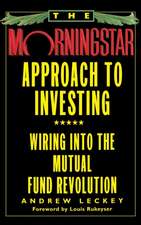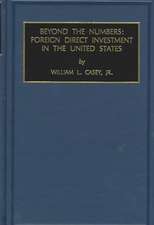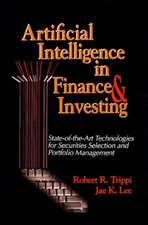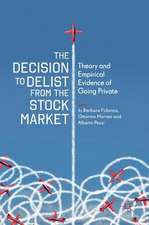Proximity Bias in Investors’ Portfolio Choice
Autor Ted Lindblom, Taylan Mavruk, Stefan Sjögrenen Limba Engleză Hardback – 16 aug 2017
| Toate formatele și edițiile | Preț | Express |
|---|---|---|
| Paperback (1) | 794.72 lei 38-44 zile | |
| Springer International Publishing – 3 aug 2018 | 794.72 lei 38-44 zile | |
| Hardback (1) | 893.40 lei 43-57 zile | |
| Springer International Publishing – 16 aug 2017 | 893.40 lei 43-57 zile |
Preț: 893.40 lei
Preț vechi: 1089.51 lei
-18% Nou
Puncte Express: 1340
Preț estimativ în valută:
170.98€ • 177.84$ • 141.15£
170.98€ • 177.84$ • 141.15£
Carte tipărită la comandă
Livrare economică 14-28 aprilie
Preluare comenzi: 021 569.72.76
Specificații
ISBN-13: 9783319547619
ISBN-10: 3319547615
Pagini: 283
Ilustrații: X, 291 p. 9 illus.
Dimensiuni: 148 x 210 mm
Greutate: 0.51 kg
Ediția:1st ed. 2017
Editura: Springer International Publishing
Colecția Palgrave Macmillan
Locul publicării:Cham, Switzerland
ISBN-10: 3319547615
Pagini: 283
Ilustrații: X, 291 p. 9 illus.
Dimensiuni: 148 x 210 mm
Greutate: 0.51 kg
Ediția:1st ed. 2017
Editura: Springer International Publishing
Colecția Palgrave Macmillan
Locul publicării:Cham, Switzerland
Cuprins
Chapter 1: Investor portfolio choice and portfolio theory.- Chapter 2: Decision-making—Rational, Bounded or Behaviorally biases.- Chapter 3: Market efficiency and the standard asset pricing models used to test market efficiency.- Chapter 4: The Financial Behavior of Individual Investors.- Chapter 5: The Measurement of Proximity Bias.- Chapter 6: Motives and Reasons for Proximity bias.- Chapter 7: Local Bias and Capital Structure.- Chapter 8: Local news and active trading.- Chapter 9: Portfolio rebalancing by individual investors and flight to safety.- Chapter 10. The relation between local bias, international home bias and financial sophistication.- Chapter 11: Conclusions and implications.
Notă biografică
Ted Lindblom is a Professor at the School of Business, Economics and Law at the University of Gothenburg, Sweden. His current research focuses on bank regulation and corporate finance with a particular focus on corporate governance, capital budgeting and financial structure decisions.
Taylan Mavruk is an Assistant Professor of Business Administration in Finance at the School of Business, Economics and Law at the University of Gothenburg, Sweden. His research focuses on empirical portfolio choice, home bias, local bias, and insider trading.
Stefan Sjögren is an Associate Professor in the Department of Business Administration at the School of Business, Economics and Law, at the University of Gothenburg, Sweden. His research interests cover a broad range of corporate finance issues and include publications on valuation, capital structure, venture capital, capital budgeting, deregulation, law and finance and efficiency measurem
ent.Taylan Mavruk is an Assistant Professor of Business Administration in Finance at the School of Business, Economics and Law at the University of Gothenburg, Sweden. His research focuses on empirical portfolio choice, home bias, local bias, and insider trading.
Stefan Sjögren is an Associate Professor in the Department of Business Administration at the School of Business, Economics and Law, at the University of Gothenburg, Sweden. His research interests cover a broad range of corporate finance issues and include publications on valuation, capital structure, venture capital, capital budgeting, deregulation, law and finance and efficiency measurem
Textul de pe ultima copertă
This book helps readers understand the widely documented distortion in the portfolio choice of individual investors toward proximate firms – the proximity bias phenomenon. First, it recapitulates the fundamentals of modern portfolio theory. It then goes on to describe and demonstrate different approaches on how to measure proximity bias and identifies and examines potential motives and reasons for such a bias. In addition, the book presents new analysis on the financial effects of individual investors’ proximity bias, explaining and contributing with possible policy implications on their portfolio distortion. This book will be of interest to students and researchers, as well as decision-makers in business firms and households.
Caracteristici
Provides a detailed discussion of the economic cost of proximity bias Expands on the impacts of proximity bias beyond portfolio diversification to the welfare of households and the cost of capital for firms Discusses the validity of different measurement methods Issues are explored at both the household level and the firm level Includes supplementary material: sn.pub/extras

























